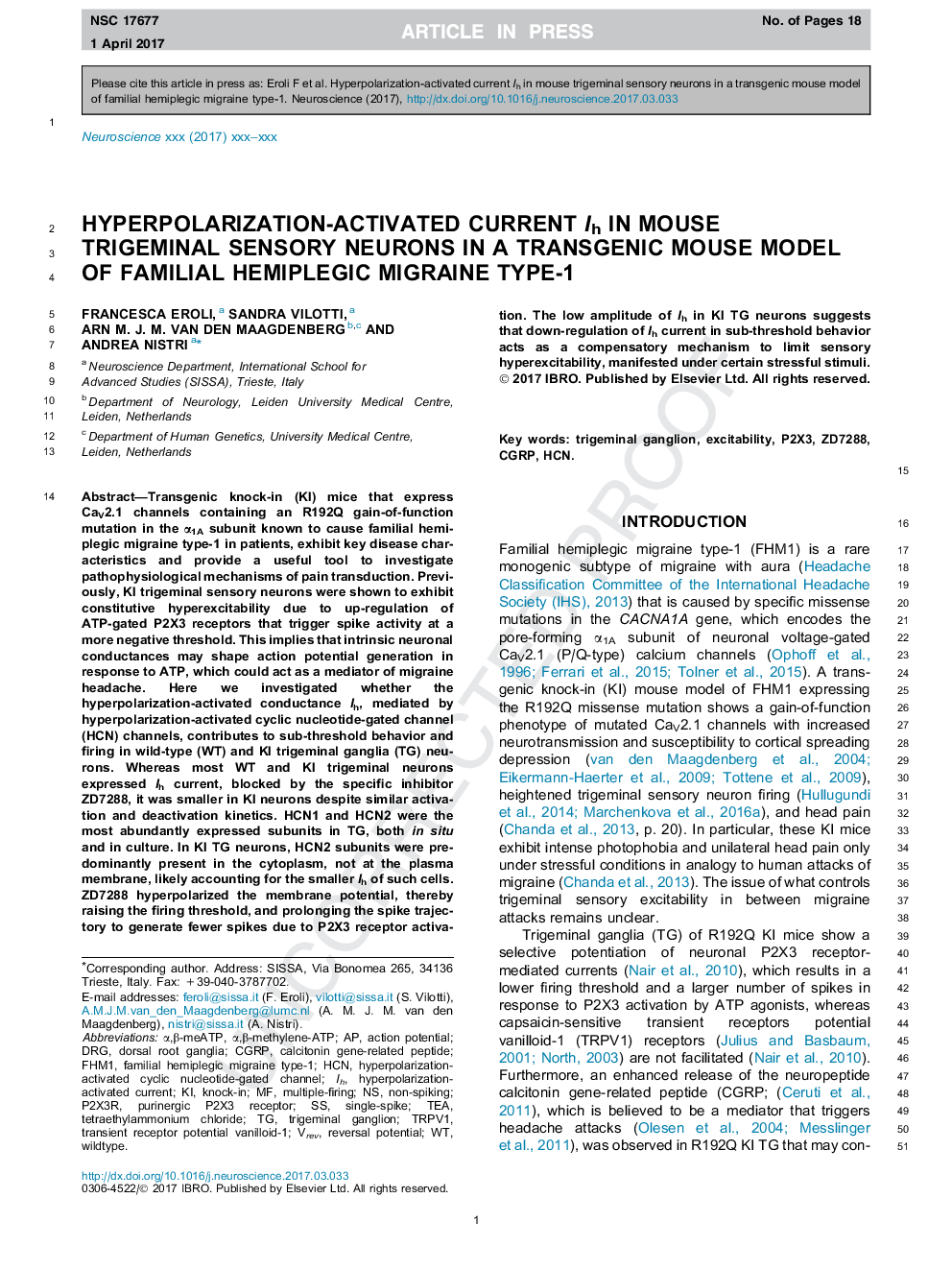| Article ID | Journal | Published Year | Pages | File Type |
|---|---|---|---|---|
| 5737904 | Neuroscience | 2017 | 18 Pages |
Abstract
Transgenic knock-in (KI) mice that express CaV2.1 channels containing an R192Q gain-of-function mutation in the α1A subunit known to cause familial hemiplegic migraine type-1 in patients, exhibit key disease characteristics and provide a useful tool to investigate pathophysiological mechanisms of pain transduction. Previously, KI trigeminal sensory neurons were shown to exhibit constitutive hyperexcitability due to up-regulation of ATP-gated P2X3 receptors that trigger spike activity at a more negative threshold. This implies that intrinsic neuronal conductances may shape action potential generation in response to ATP, which could act as a mediator of migraine headache. Here we investigated whether the hyperpolarization-activated conductance Ih, mediated by hyperpolarization activated cyclic nucleotide-gated channels (HCN), contributes to sub-threshold behavior and firing in wild-type (WT) and KI trigeminal ganglia (TG) neurons. Whereas most WT and KI trigeminal neurons expressed Ih current, blocked by the specific inhibitor ZD7288, it was smaller in KI neurons despite similar activation and deactivation kinetics. HCN1 and HCN2 were the most abundantly expressed subunits in TG, both in situ and in culture. In KI TG neurons, HCN2 subunits were predominantly present in the cytoplasm, not at the plasma membrane, likely accounting for the smaller Ih of such cells. ZD7288 hyperpolarized the membrane potential, thereby raising the firing threshold, and prolonging the spike trajectory to generate fewer spikes due to P2X3 receptor activation. The low amplitude of Ih in KI TG neurons suggests that down-regulation of Ih current in sub-threshold behavior acts as a compensatory mechanism to limit sensory hyperexcitability, manifested under certain stressful stimuli.
Keywords
DRGα,β-methylene-ATPZD7288P2X3FHM1tetraethylammonium chlorideCGRPHCNTRPV1α,β-MeATPexcitabilityhyperpolarization-activated currentknock-inwildtypetransient receptor potential vanilloid-1action potentialreversal potentialcalcitonin gene-related peptideTEAhyperpolarization-activated cyclic nucleotide-gated channeldorsal root gangliatrigeminal ganglion
Related Topics
Life Sciences
Neuroscience
Neuroscience (General)
Authors
Francesca Eroli, Sandra Vilotti, Arn M.J.M. van den Maagdenberg, Andrea Nistri,
